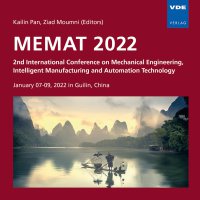Computational Modelling and Analyzing of Different Cars When U-turn or Lane-change
Conference: MEMAT 2022 - 2nd International Conference on Mechanical Engineering, Intelligent Manufacturing and Automation Technology
01/07/2022 - 01/09/2022 at Guilin, China
Proceedings: MEMAT 2022
Pages: 9Language: englishTyp: PDF
Authors:
Alimu, Ankaer (School of Mechanical Engineering, Tianjin University, Tianjin, China)
Abstract:
In an era with very high standard on the performance of the car, all elements which can decide the overall states of the car are important. During the past researches, the main goal was to optimize the performance of the car when doing turns or lane change using computer models and algorithms. In this study, the primary purpose is focused on finding the suitable data related to car and optimize certain numbers as possible as we can, in order to perform the car with a more fast and steady way. To maximize the effort of the study, most of the simulation and calculation rely on Python as well as basic first-order and high-order numerical equations. Besides that, some of the foundamental dynamics and kinetics when describing the motion and state of the car were used in the study. There are three parts in this study, begin with depicting the overall physical models of the car using knowledge about dynamics. After modelling, using Python to translate our physical process in a code-present way, which includes different functions such as the angle of the car when completing the u-turns, the vertical force of the car and the overall numerical solutions of the car linked to forces and angles, etc. The last part is to analyze the simulation results. The study shows that when complete u-turn and lane-change, the most decisive variable is the chi angle, which can directly effect the time and the completed angle of the turn. Also, in almost every different initial data related to time, both the BMW and the Chevrolet cannot complete the u-turn which the sign is chi equals to 180 degree. When it comes to the lane change. The process is quite stable and can be easily concludes that the main determent is the initial data of the two cars such as the Moment of Inertia and the lengths to the center of the car.


